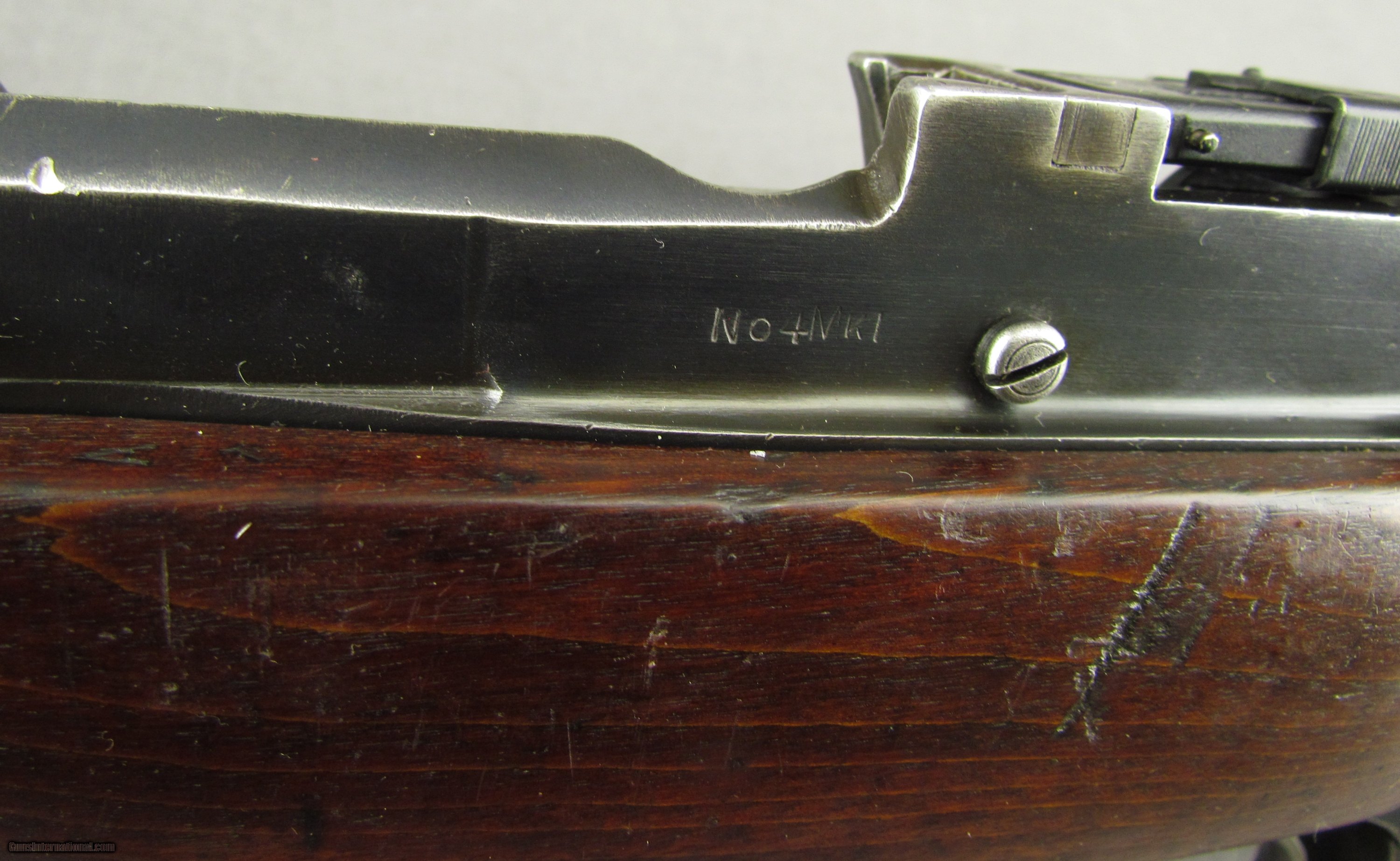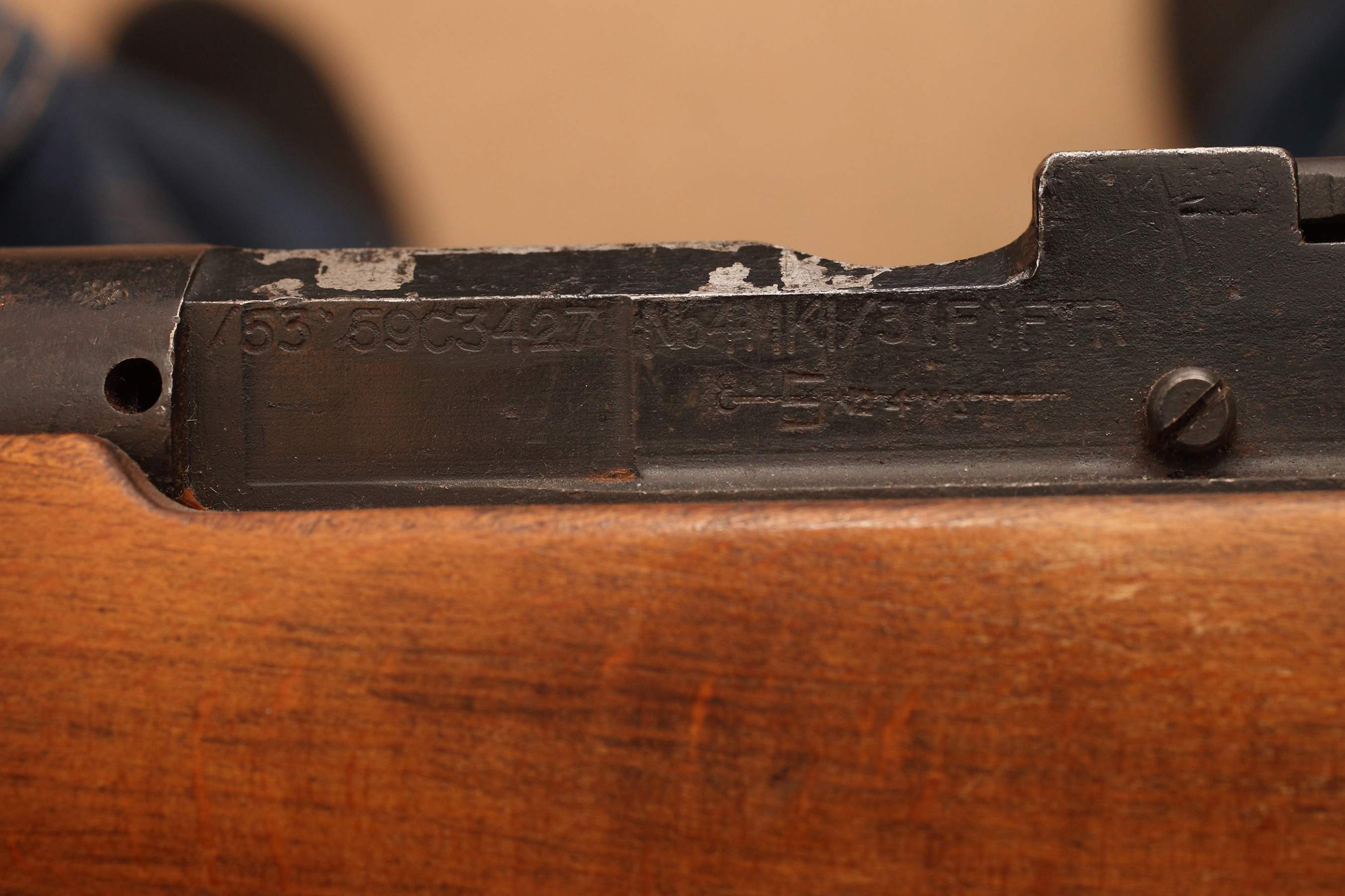

The finish on the metalwork it very good to excellent, the woodwork is very good with only a few minor marks. The bore is mint, there is no pitting or throat erosion in the bore or on the bolt face. The rifle has not been refinished outside of the work conducted in 1944 by the Yugoslavs. The rifle has had reproduction low turret bases and rings fitted (removal of the plugs fitted by the Yugoslavs), along with a reproduction Zeiss Zielvier 4x scope, reproduction leather Zielvier scope covers, reproduction leather iron sights cover and reproduction web scope pouch. Most serial numbers have been scrubbed, however the bolt, receiver, stock and floor-plate have matching numbers, noting only the number on the floor-plate appears to have been re-struck. The rifle was re-marked with the Yugoslav communist crest and Preduzece 44.

During refurbishment the bulk of German markings were scrubbed (although some waffenampts are still present and evidence of markings being removed is clear), further the original scope, low turret mounts and bases were removed and the holes plugged and overstamped. The rifle was captured by the Yugoslavs during their liberation in 1944, at which time, the rifle was refurbished as a ‘M98’, predecessor to the M47and M48 rifles. This rifle started as a K98 Sniper Rifle in service with the German Army. Matching numbers, mint bore, excellent laminated stock. Fitted with leather sling, leather iron sights protector, scope pouch (for when detached), leather scope lense covers.

Zeiss Zielvier 4x post and cross hair scope. Magazine cutoffs were eliminated with the Mk III onward from 1915 (though many were made with the slot still in the receiver after that date).Mauser K98 snipers rifle.

This was one of the reasons for the "Old Contemptibles" having such a high rate of fire when needed - upto to 20 rounds per minute or more - and capable of giving the Germans the impression that the BEF had more machine guns than the 2 per battalion (and not all had them all) they actually had.įirst Class Shot (not marksman) standard at the time for the BEF (and something like 50%+ were FCS or better) was the 20 rounds, in one minute, all bull or inner at 300 yards.Īs a comparison - the Australian Army standard rate of fire with the L1A1 was 20 rounds When a "mad minute" was needed (or rapid fire was ordered) the round in the chamber was used, the cut-off withdrawn and the 10 rounds expended, and the magazine replenished from chargers. What you call a "stripper clip" was known as a "charger" - each containing five rounds, loaded in a particular manner (the complete rim of each alternate round was above the rounds on either side of it else the rounds did not enter the magazine with the round above in front of that below it).ĬES ("Complete Equipment Schedule" - a later day term for the list of equipment that constituted a "system" be it a weapon or wireless/telegraphy set or a tank - came in 2 parts Basic (enough to use) and Extended (all the accessories that were "nice") for the Rifle Lee Enfield No1 or No 4 included only one magazine so only one was issued.Įarly versions of the Mk III included a magazine cut-off, that allowed the 10 rounds of the magazine to be held in reserve and firing was done by single rounds. Even better explanation - "stripper clip" was never used in the British or Commonwealth Army.


 0 kommentar(er)
0 kommentar(er)
